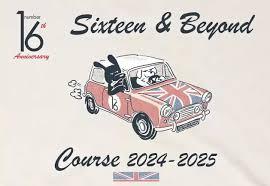Hi Students! En el post de hoy os explicaremos los diferentes tiempos verbales que existen en inglés.
Keep reading!
ESQUEMA DE LOS TIEMPOS VERBALES EN INGLÉS
ESTRUCTURA TIEMPOS VERBALES EN INGLÉS: PRESENTE
Present simple
El present simple es el primer tiempo verbal que se suele enseñar al aprender inglés. Lo utilizamos para hablar de hechos y para hablar de rutinas.
La estructura de este tiempo verbal es la siguiente:
SUJETO + INFINITIVO
*Cuando utilizamos la tercera persona singular, se añade –s/-es al final del infinitivo.
Ejemplos:
“I wash my teeth three times a day.”
“He plays football every Saturday afternoon.”
“We live in Madrid, the capital of Spain.”
Present continuous
A diferencia del present simple, el present continuous lo empleamos para acciones que están transcurriendo en el momento.
La estructura de este tiempo verbal es la siguiente:
SUJETO + VERBO TO BE + -ING
*Es importante recordar que el verbo to be es el verbo que se conjuga dependiendo de que persona estamos hablando, el gerundio (-ing) es fijo.
Ejemplos:
“I’m eating my dinner at the moment.”
“He’s having a shower now, come back later.”
“They’re staying at their friends house tonight.”
Present perfect
Con el present perfect es donde quizás se complica la cosa un poquito. Este tiempo verbal lo utilizamos para referirnos a acciones que empezaron en el pasado, pero han continuado hasta el presente.
La estructura de este tiempo verbal es la siguiente:
SUJETO + HAVE (VERBO AUXILIAR) + PARTICIPIO
*Igual que con el present continuous, el verbo auxiliar (en este caso have) es el que se conjuga dependiendo de la persona y el participio es fijo.
Ejemplos:
“I have lived in Spain now for 17 years.”
“She has walked to school every day since September.”
“They have studied for ages, I hope they pass the exam.”
TIEMPOS VERBALES EN INGLÉS: PASADO
Ahora vamos a hablar de tiempos verbales en el pasado que como ya sabréis, son muy importantes para hablar de anécdotas o hechos anteriores.
Past simple
Este tiempo verbal lo utilizamos cuando hablamos de acciones que ya están terminadas.
Estructura:
SUJETO + PARTICIPIO
*Recordatorio: como norma general, los participios en inglés acaban en –ed. Pero también hay verbos irregulares.
Ejemplos:
“We played a football match on Saturday.”
“They worked very hard this morning.”
“I thought it was later.” Thought is an irregular verb.
Past continuous
Como hemos visto antes con el present continuous, el past continuous también habla de una acción en progreso, pero esta vez en el pasado.
Estructura:
SUJETO + WAS/WERE + GERUNDIO
*Hay que utilizar was o were dependiendo de la persona en que estemos hablando.
Ejemplos:
“I was watching TV when it started raining.”
“They were walking home at 9 o’clock.”
“We were sleeping for ages after the party.”
Muchas veces combinamos el past continuous con el past simple cuando hablamos de acciones interrumpidas por otros. (Como en el primer ejemplo).
Past perfect
Por último tenemos el past perfect que se emplea para contrastar dos acciones en el pasado. Al igual que con el past continuous, el past perfect se combina mucho con el past simple.
Estructura:
SUJETO + HAD + PARTICIPIO
Ejemplos:
“I had studied for ages and I didn’t pass my exam.”
“They had been here for days before I saw them.”
“We had met a couple of times in the past.”
RESUMEN TIEMPOS VERBALES EN INGLÉS: FUTURO
Finalmente vamos a ver los diferentes tiempos verbales en el futuro.
Future simple
Se usa para hablar de acciones que van a pasar en el futuro.
Estructura:
SUJETO + WILL + INFINITIVO
SUJETO + VERBO TE BE + GOING TO + INFINITIVO
Como veis, el future simple tiene dos estructuras diferentes. La gran diferencia es que con going to estamos hablando de un futuro más cercano.
Ejemplos:
“I’m going to play football tonight.”
“They’ll be home by 8, so don’t worry.”
“He’s going to start at the gym this weekend.”
“I’ll move to Spain in the future.”
Future continuous
El future continuous lo utilizamos para hablar de acciones que transcurrirán en el futuro durante un período concreto.
Estructura:
SUJETO + WILL + VERBO TO BE + GERUNDIO
Ejemplos:
“I’ll be watching TV at this time tomorrow.”
“We’ll all be partying next summer.”
“She’ll be studying a lot this weekend.”
Future perfect
Después de conquistar el future continuous, pasamos al future perfect. Este tiempo verbal lo utilizamos para hablar de acciones que acabarán en cierto punto en el futuro.
Estructura:
SUJETO + WILL + HAVE + PARTICIPIO
Ejemplos:
“He will have finished his exam by 2 o’clock,”
“They’ll have arrived home in about 2 hours.”
“I’ll have eaten my food before you get home.”
Hasta aquí el resumen de los tiempos verbales en inglés. Podéis consultar este post siempre que queráis y así poder repasar esta parte tan fundamental del idioma.
Os recomendamos que leáis el post sobre el present perfect simple y podáis profundizar en todos los tiempos verbales en inglés.
¡Hasta pronto! 😀
Consejos para estudiar inglés en el extranjero
Descubre los beneficios y opciones para estudiar inglés en el extranjero, con consejos para elegir programas y prepararte para la experiencia
Ejercicios prácticos para aprender los condicionales en inglés
práctica condicionales ingles
SUMMER EXPERIENCE - CHECKLIST
Revisa el Checklist para la Summer Experience 2024 de Number 16




